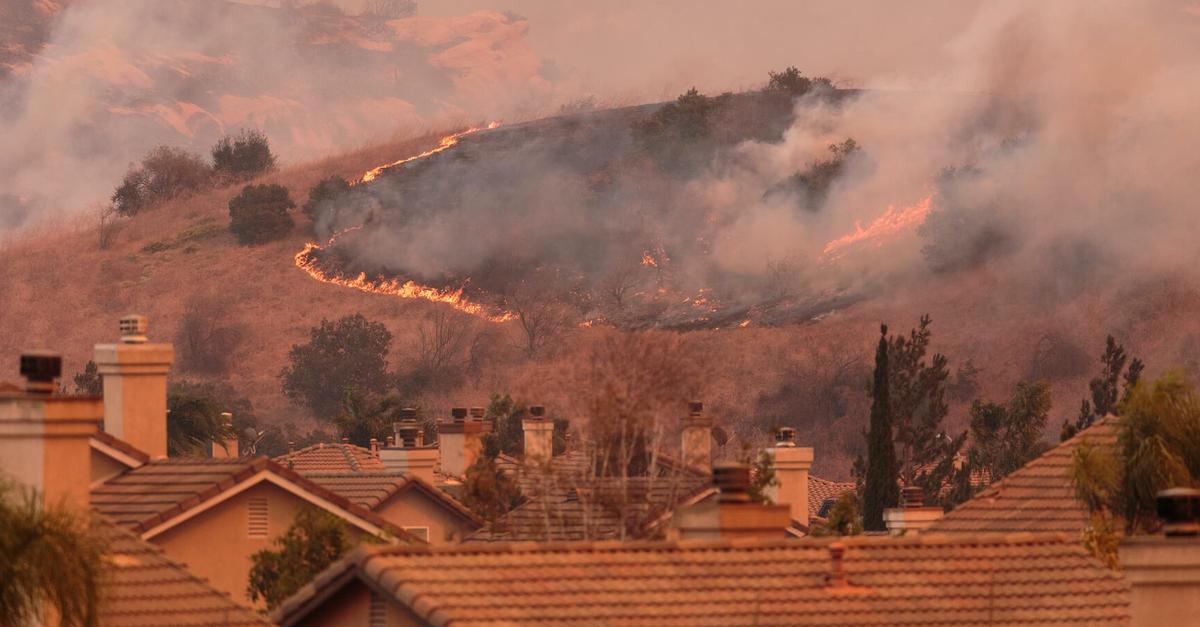“We don’t even name it a season anymore. There’s no such factor as a hearth season,” Scott McLean, Cal Fireplace’s Deputy Chief of Communications, stated in an interview with Yahoo Information. “Proper now, we’re a hearth 12 months. We’re having fires each month of the 12 months.”
Why There’s No Wildfire Season Anymore
California’s wildfire season sometimes peaks from Might to October, however with each passing 12 months, this timeframe turns into increasingly more out of date. Many specialists argue there is no such thing as a longer a single season for wildfires; the danger is year-round within the dry, open areas of the West. The Camp hearth, for instance, began on November 8, 2018. It took 17 days to include.
Whereas the winter months deliver some moisture and make fires much less possible and extra manageable, it doesn’t cease them from igniting utterly. Let’s check out why wildfire season is now 12 months spherical.
1. Local weather Change Is Inflicting Extra Droughts
Many elements of the Earth have new regular temperatures 2.7 levels Fahrenheit larger than pre-industrial ranges. That may not appear to be a lot, however that quantity of warming creates a whole lot of change: warmth waves, droughts, water shortages, excessive precipitation, rising sea ranges, and fires, to call a couple of.
These rising temperatures are the rationale California has seen document excessive temperatures and remains to be experiencing average to excessive droughts in 68 % of the state. Lack of moisture will increase gasoline flammability and availability, making a transparent hyperlink between elevated drought and elevated hearth threat. Drier situations additionally enhance forest pests, such because the mountain pine beetle, that may weaken or kill timber. Lifeless timber develop into ready-to-burn gasoline.
To make issues worse for Californians, the Heart for Local weather and Power Options notes a 1.Eight diploma Fahrenheit (or 1 diploma Celsius) enhance might enhance the median forest space burned per 12 months by 600 %.
2. There’s A Lot of Gas for Huge Fires
Tree mortality in California is at an all-time excessive due to local weather change, unprecedented drought, excessive tree densities, and a bark beetle infestation. Since 2010, California’s nationwide forests have an estimated 129 million useless timber, many close to communities, campgrounds, trails, and energy traces.
That’s ready-made gasoline that even the tiniest spark can ignite. Wildfire habits is determined by gasoline, climate, and topography. The intense warmth this summer time prompted extra thunderstorms and lightning strikes, providing the preliminary spark for a lot of fires.
3. Wildfires Are Spreading Quicker
Not solely is it simpler for wildfires to begin in dry situations, however they unfold quicker, too. For proof, take a look at the CZU Lightning Advanced hearth in California that started in August 2020. It quadrupled in dimension in simply someday. The SCU and LNU Lightning Advanced fires are the second- and third-largest blazes ever recorded in California.
In September 2020, hearth officers in California’s Sierra Nationwide Forest handled the Labor Day weekend fires that unfold by means of 15 miles of forestland in someday.
In the identical week, the North Advanced hearth in Plumas Nationwide Forest unfold 25 miles in someday, consuming 394 sq. miles of forest lands. Once more, hotter temperatures and tens of millions of useless timber helped gasoline the blaze.
And it’s not solely acreage that’s in jeopardy – many houses and communities are nestled close to the forest and will not have a lot discover when they should evacuate.
4. Wildfires Are Getting More durable to Comprise
Wildfires are getting tougher to place out partially due to the abundance of ladder fuels in overgrown forests. These are low-lying tree branches, shrubs, and small and medium timber beneath the cover of bigger timber. As soon as a slow-burning floor hearth on the bottom reaches these ladder fuels, fires can unfold quickly to all the high cover. When these massive timber are burning, embers blown by the wind can ignite neighboring timber and could be unfold additional downwind.
Ladder fuels performed a key position within the 2018 Camp hearth, which blazed by means of all the city of Paradise.
Elements of Northern California additionally witnessed hearth tornadoes this summer time. These vortices of flame are fashioned by means of excessive warmth, uneven terrain, and turbulent winds. As a result of they create their very own climate system, hearth tornadoes could be extremely laborious to fight.
5. Present Fireplace Management Coverage Isn’t Serving to – And People Aren’t, Both
Fireplace suppression (placing out fires as quickly as they begin) is the go-to technique for land managers, but it surely interrupts the pure burning cycle. Analysis exhibits 20 % of California would profit from gasoline therapies: logging or clearing brush, prescribed burns, and letting wildfires in uninhabited areas run their course beneath supervision.
Plus, extra individuals are dwelling in communities towards landscapes which have a whole lot of wildfire exercise. Fires are extremely laborious to include on this area. New housing building in fire-prone areas means extra folks will likely be in danger when fires start.
People aren’t doing their half to stave off fires, both. Many fires begin by human negligence, like pyrotechnics utilized in a gender reveal announcement, which began the September 7, 2020, El Dorado Fireplace that burned greater than 14,000 acres.
Constructing Fireplace Resilience
To guard your self and your own home from wildfires, wildfire insurance coverage is a should. You may as well do your half in your neighborhood to scale back the probability and affect of wildfires by:
- Voting towards residential improvement close to fire-prone forests.
- Clearing brush and timber close to your own home.
- Reworking with fire-resistant design options and supplies.
- Making a hearth security plan for your loved ones.
